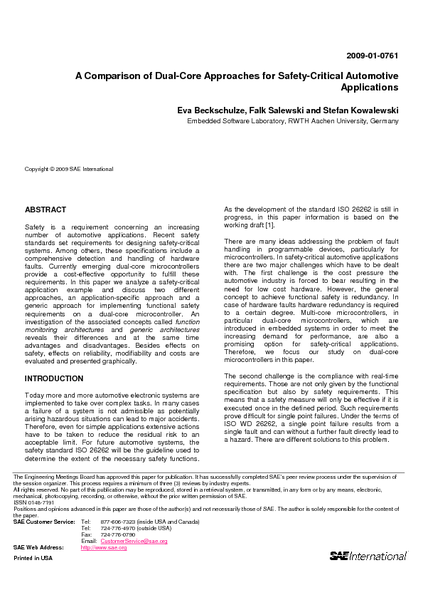A Comparison of Dual-Core Approaches for Safety-Critical Automotive Applications
Safety is a requirement concerning an increasing number of automotive applications. Recent safety standards set requirements for designing safety-critical
systems. Among others, these specifications include a comprehensive detection and handling of hardware
faults. Currently emerging dual-core microcontrollers provide a cost-effective opportunity to fulfill these requirements. In this paper we analyze a safety-critical application example and discuss two different approaches, an application-specific approach and a generic approach for implementing functional safety requirements on a dual-core microcontroller. An investigation of the associated concepts called function
monitoring architectures and generic architectures reveals their differences and at the same time advantages and disadvantages. Besides effects on
safety, effects on reliability, modifiability and costs are evaluated and presented graphically.
systems. Among others, these specifications include a comprehensive detection and handling of hardware
faults. Currently emerging dual-core microcontrollers provide a cost-effective opportunity to fulfill these requirements. In this paper we analyze a safety-critical application example and discuss two different approaches, an application-specific approach and a generic approach for implementing functional safety requirements on a dual-core microcontroller. An investigation of the associated concepts called function
monitoring architectures and generic architectures reveals their differences and at the same time advantages and disadvantages. Besides effects on
safety, effects on reliability, modifiability and costs are evaluated and presented graphically.

Download A Comparison of Dual-Core Approaches for Safety-Critical Automotive Applications.pdf (166280)
(MD5: 0c731fe1b31764b900b728d38f487ffb)
(MD5: 0c731fe1b31764b900b728d38f487ffb)